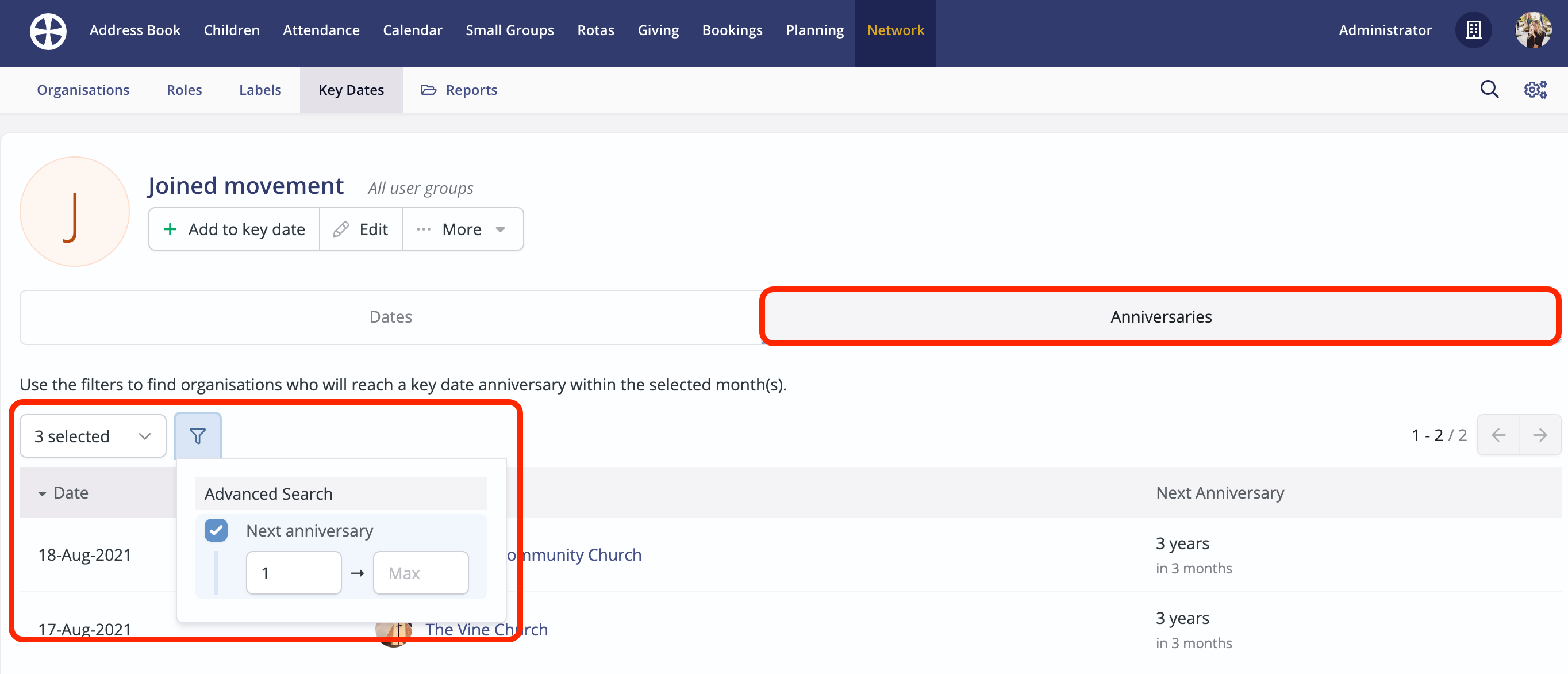Adding and managing organisation key dates
In this article
Introduction to key dates
Adding key dates
Assigning key dates
Merging key dates
Key date reporting
Identifying organisations with missing key dates
Celebrating key date anniversaries
Organisations in your network may have important date-based milestones and moments in time that you wish to record and track - either for statistical or historic reporting or to mark anniversaries of an important occasion. For example, you might record the date an organisation joined or left your network, dates of training or accreditation and various onboarding or administrative key dates. ChurchSuite makes this easy...
Introduction to key dates
Organisation key dates are managed from the Key Dates section of the Network module. Key Dates are only visible to module Users in ChurchSuite and do not surface outside of ChurchSuite but you can optionally further restrict key date visibility, perhaps to just yourself or to selected User Groups if you wish. To add a new Key Date or to remove a Key Date from an organisation you will need at least Write permissions for the module. However, any user with at least Use permissions for the module can assign existing key dates to organisations. Note that deleting a Key Date will remove all instances of that key date from all organisations in the module.
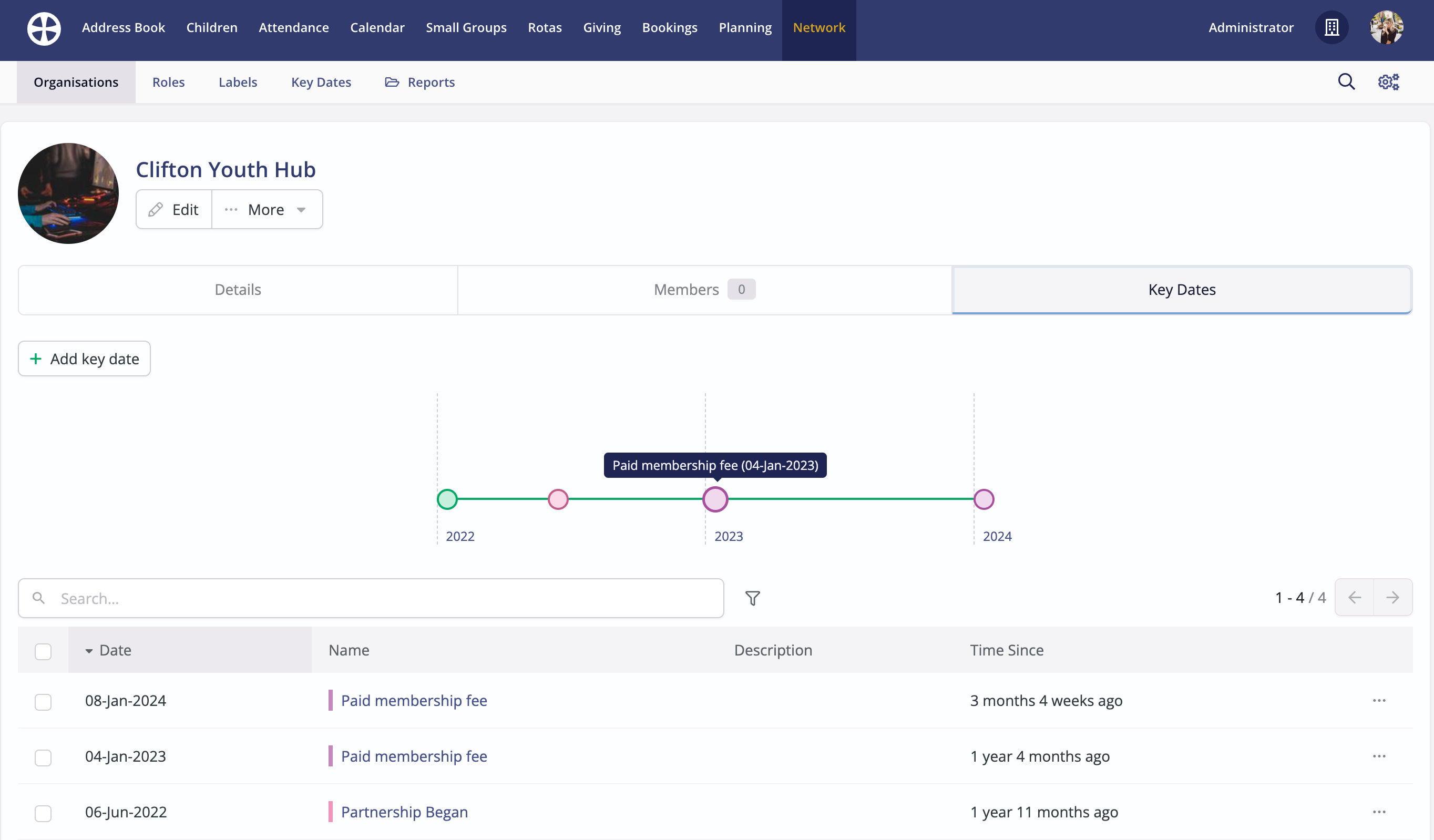
When viewing a key date, a 'heat map' distribution is surfaced, clearly showing when the key date has been added to organisations over time, demonstrating how many contacts were added to the key date during any given month. A list of organisations is also surfaced, in descending date order:
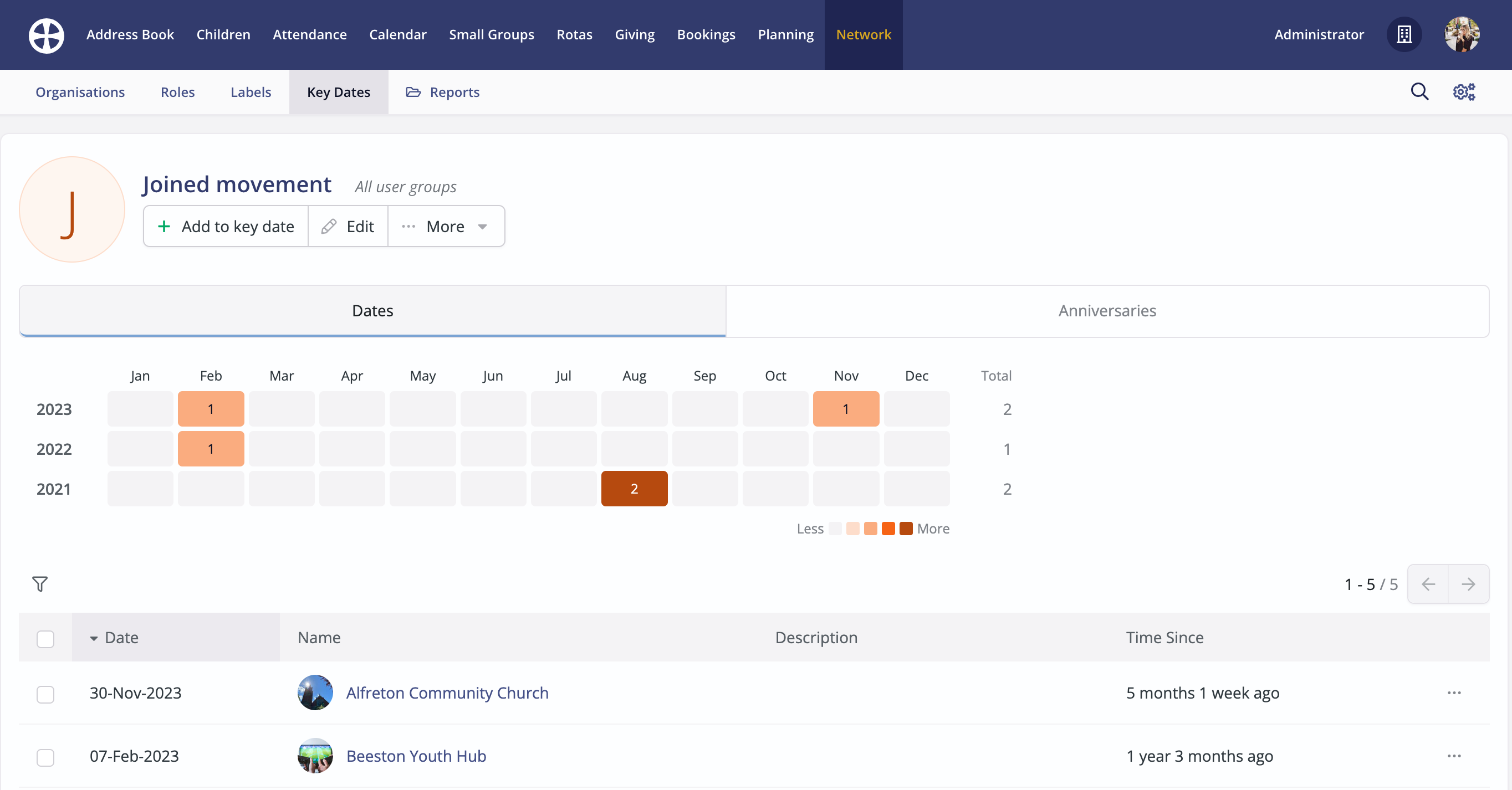
Adding key dates
To add a new key date, head to the Key Dates section and click Add key date:

Give your key date an appropriate name. Select a colour to help differentiate between key dates in a long list and optionally, if you do not wish the key date to visible to all users, restrict th evisibility to just you or to selected user groups:

Assigning key dates
You can add and manage all your key dates in the Key Dates section of the module. When assigning existing key dates on an organisation's profile - explained below - you can also add new key dates. The process for adding a new key date is the same in the Key Dates section of the module and on an organisation profile.
To assign a Key Date, head to the organisation View and click Add key date on the Key Dates tab:
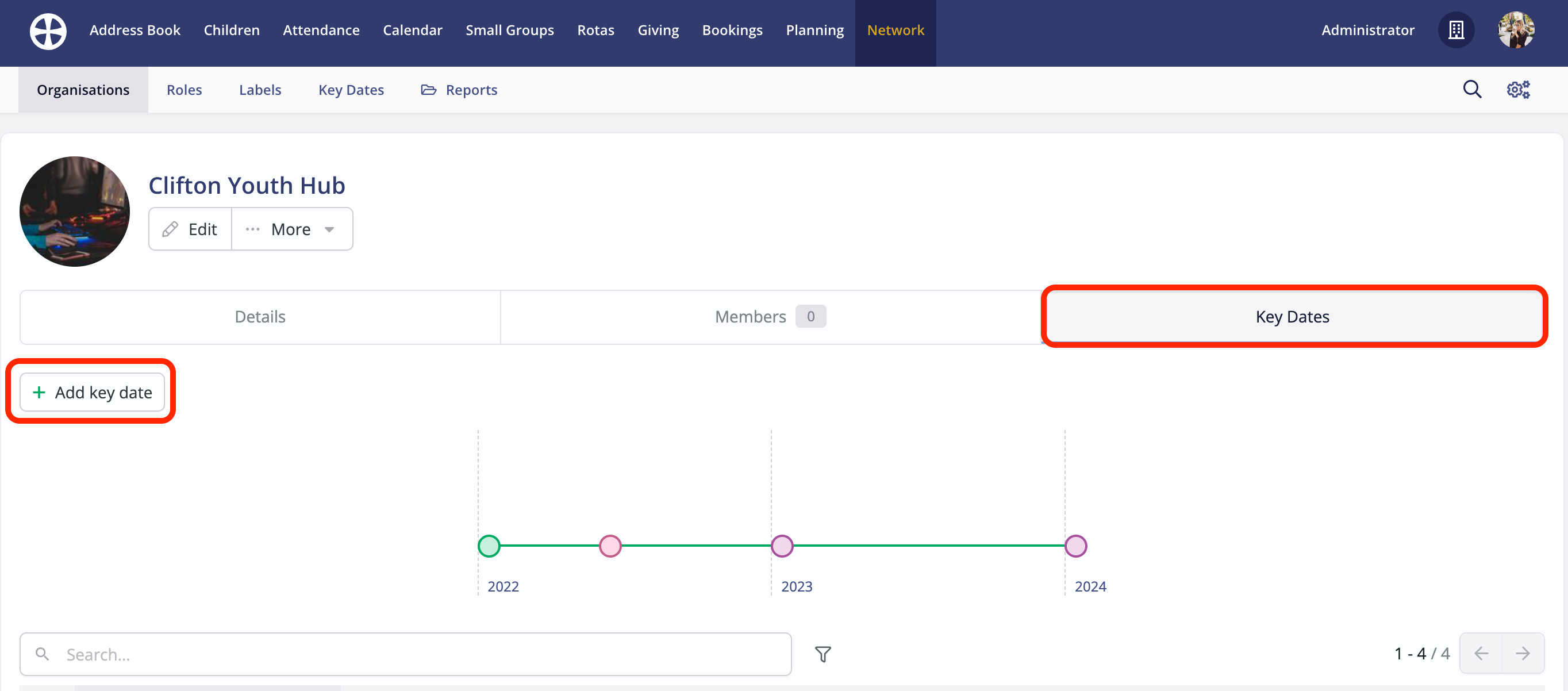
On the Add key date pop-up, begin typing a key date Name. As you type, ChurchSuite will auto-suggest from your existing Key Dates - either select an existing Key Date or, if there are no matching results, you can Add a new key date.

When adding a new key date, specify the key date Name, choose an optional Colour, and set the key date Visibility - in this context, 'All users' means all module users. Click Save & Return.

Clicking into the Date field launches a date picker to choose the date to be assigned to the organisation. Optionally add a brief Description and click Save to complete the process.

Assigned Key Dates are listed on the Key Dates tab of an organisation, including a timeline representing the organisation's key date journey. Hovering your cursor over the timeline pins shows details of the key dates.
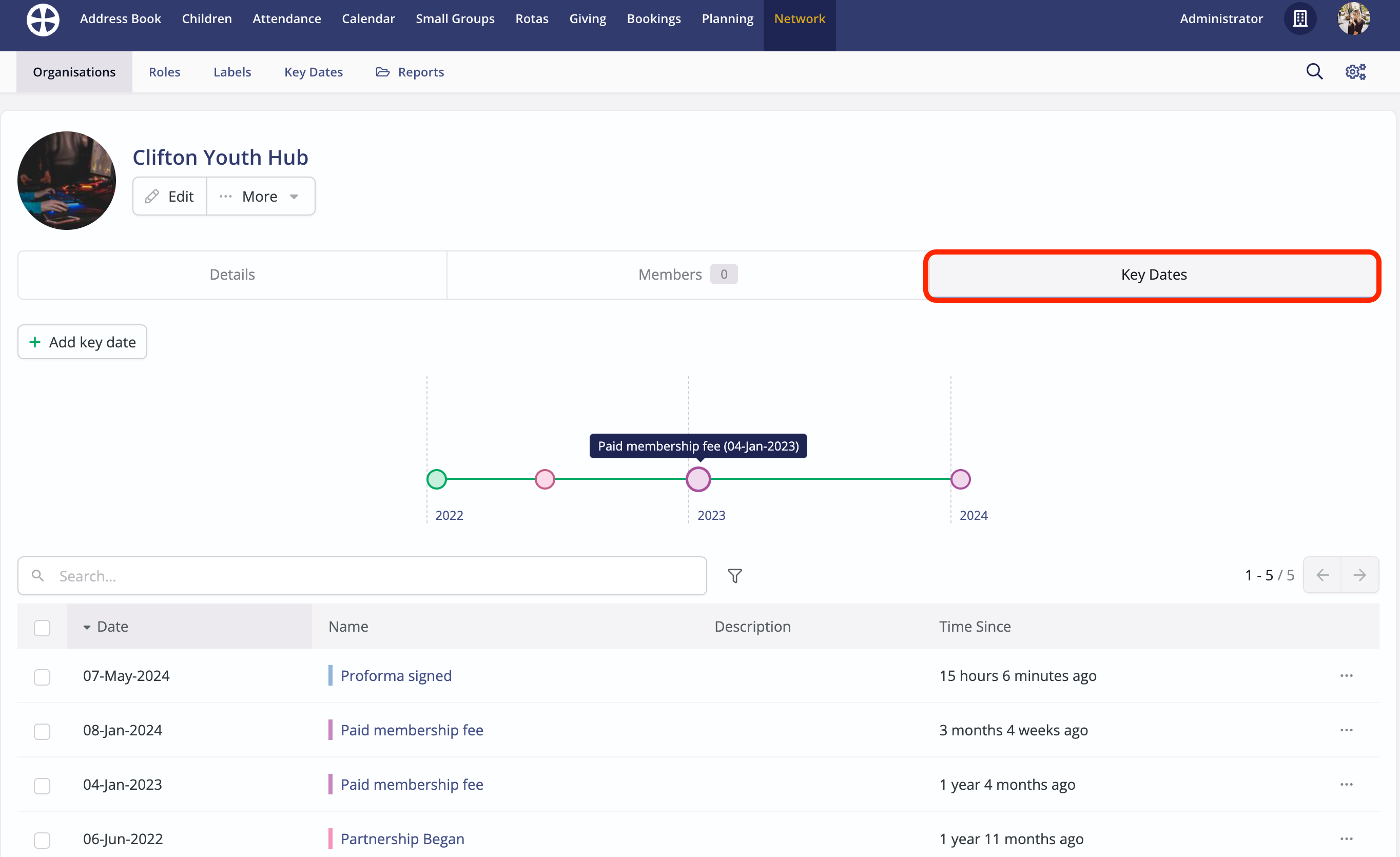
Finally, note the key date Edit and Remove actions. When editing an organisation key date, you can only change the Date and Description - a key date Name can only be changed in the Key Dates section of the module.

Merging key dates
You can easily merge two key dates - perhaps where different Users have inadvertently created a similar key date. Working from the Key Dates section select Merge from the key date Actions for the key date you wish to retain.
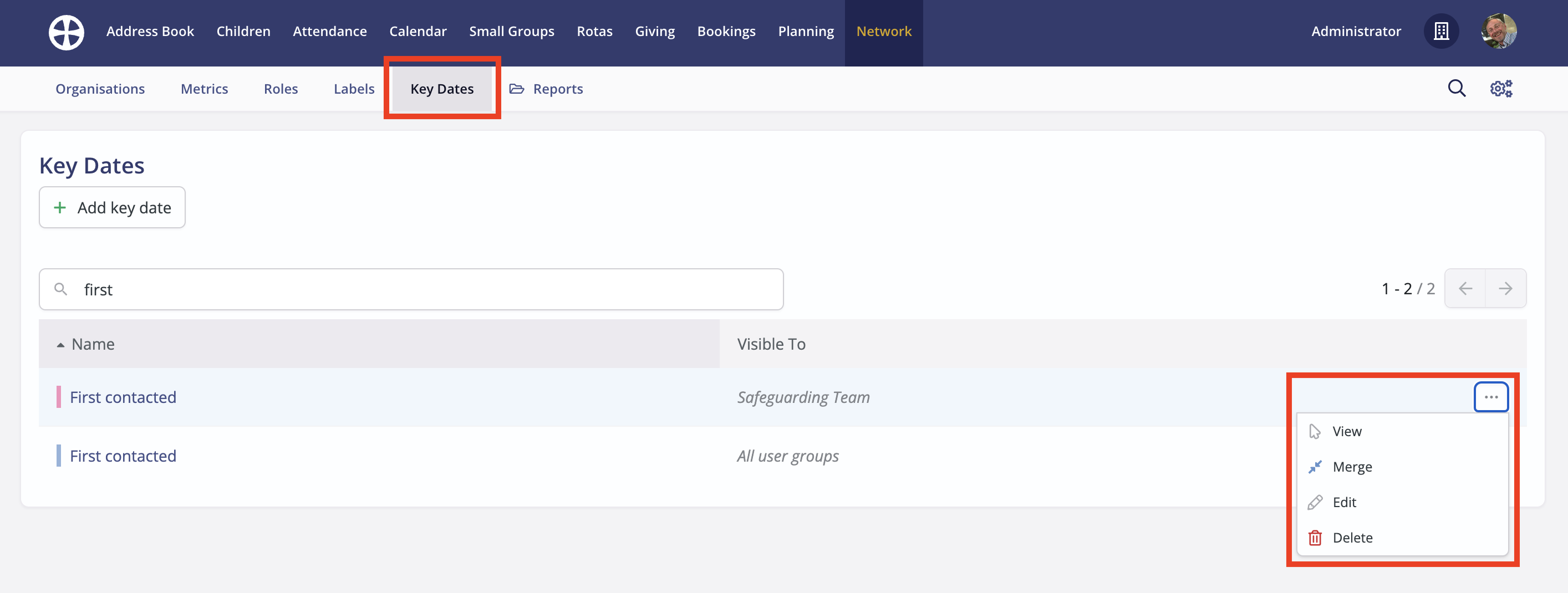
On the Merge Key Dates pop-up, search and select the key date that you wish to merge and remove, and click OK to complete the process.

All instances of the removed Key Date name are merged into the retained Key Date.

Key date reporting
Within the Network module's Reports section is a helpful Key Dates report that produces lists of organisations with selected Key dates fields within an optionally defined date range. Click Generate to apply filter changes. The list of matching results can also be further filtered to show just those in selected Labels.

Note that the Key Dates report only draws from organisations that have at least one Key Date assigned. If you need to identify organisations that do not have any key dates or do not have a particular Key Date, you should use the Key Dates Missing report - explained in the next section - which draws from all organisations when generating the results.
Identifying organisations with missing key dates
Within the Network module's Reports section is a helpful Key Dates Missing report that produces lists of organisations without selected Key Dates fields. As with the Key Dates report, you have the option to refine or filter your search by Labels and relevant dates to find the information that you need.

Celebrating key date anniversaries
When you click through to view any key date, you will find a convenient Anniversaries tab. Here, you can filter by Month - by default, the current month is selected but you can select multiple months - and use the Advanced search to select the anniversary period you are interested in. So, for example, you could search for organisations who will celebrate a membership milestone in the next few months:
